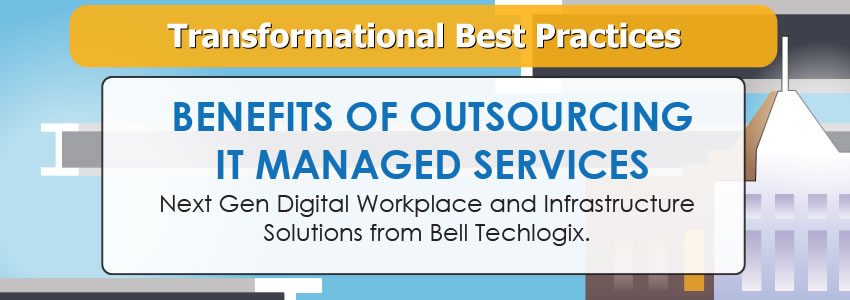IT MANAGED SERVICES & SOLUTIONS

72% of CEOs say the rapid pace of technological innovation is their biggest challenge. Transformation and innovation become reality when departments are aligned.
What enables a company to leverage economies of scale and consistency around their IT infrastructure are standardized best practices. Organizations can choose to develop their own processes from scratch, writing and testing process after process after process: incident, change, problem, knowledge, major incident, request, asset. The list goes on and on. This kind of customization takes the most time to achieve standardization and eventually, business transformation.
 Elements of Transformational Best Practices
Elements of Transformational Best Practices
With each client engagement, Bell Techlogix brings comprehensive best practices to every department from the start, allowing CIOs and CEOs to focus on growth as a result of innovation. We start a client partnership with a gap analysis:
From this initial analysis, we customize a road map of how we can transform the company.
It's always a good practice to make sure processes and procedures are aligned with business goals. Many need some level of polish to tailor them specifically to the client’s current environment. Rather than starting from zero, Bell Techlogix brings to the table an integrated process procedure. By applying these already documented best practices to what we learn from the client's environment, we quickly achieve a tight business alignment. It’s also how standardized best practices can transform.
Benefits of Transformational Best Practices
Bell Techlogix’s customized road map to transformational best practices ensures that we deliver our service in a standardized, repeatable fashion with a high level of quality. Rather than wasting time worrying about the flowchart for an escalation procedure, for instance - What's that process look like? How do we do it efficiently? - our clients leverage proven best practices and focus on business alignment and growth. They can spend time thinking about what really matters to the business:
By tailoring standardized best practices and ITS foundational practices and tracking the right metrics for that client, the new process will fit into their organization like a glove. They'll be more likely to utilize it consistently and see the ongoing transformation of that best practice.